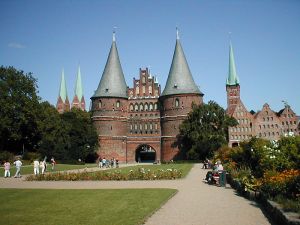The Gothic style started in Spain as a result of Central European influence in the twelfth century when late Romanesque alternated with few expressions of pure Gothic architecture. The High Gothic arrives with all its strength through the pilgimage route, the Way of Saint James, in the thirteenth century. Some of the most pure Gothic cathedrals in Spain, related to the German and French Gothic, were built at this time.
The Gothic style was sometimes adopted by the Mudéjar architects, who created an hybrid style, employing with European techniques and Spanish-Arab decorations. The most important post−thirteenth-century Gothic styles in Spain are the Levantino, characterized by its structural achievements and the unification of space, and Isabelline Gothic, made under the Catholic Monarchs, that supposed a slow transition to Renaissance.
In fact, the Gothic architecture, really took root in Spain. When in the first half of the sixteenth century in Italy the Renaissance had its greatest expansion, began in Spain some great Gothic Cathedrals.






